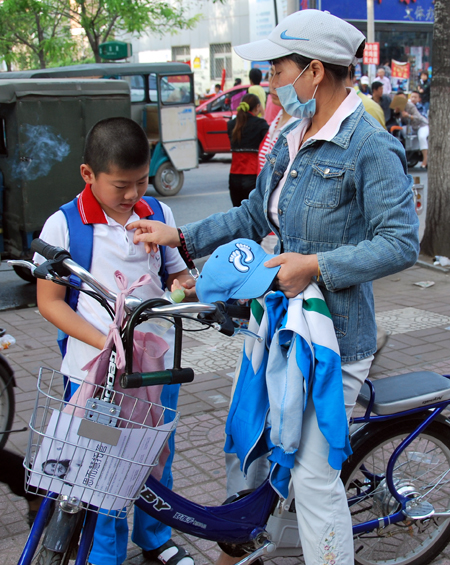
Editor’s Note:
Revelstoke residents Leslie and David Savage have been in Beijing since early this summer. Leslie is teaching there and David is sending back articles about different aspects of Chinese life. This is the second in that series.

BEIJING — It’s an exciting time right now in China as about 231 million children from across this vast land of almost a billion square kilometers are off to school with high hopes and oodles of enthusiasm. (All numbers here are approximations as precise and reliable data just isn’t available). The vast majority of these students carry high expectations, and even more so their parents, as education is a “key to destiny” both for the individual and the nation itself.
Schooling is organized somewhat similarly to the Canadian system: primary school starting at age six going to eleven is compulsory and mostly but not wholly government funded, followed by another four years, which is also compulsory, at a secondary school, also mostly funded.
Secondary schooling, sometimes divided into three years of middle school and three years of high school, carries on to the age of 18 for those who want it or can afford it. Both middle school and high school end with state-wide examinations. Not all can afford secondary schooling, because, although the teaching is free, it’s the responsibility of parents to provide books, uniforms, paper, pens and other items needed by students. This is often difficult for low-income parents, and the number of children from poor homes is still considerable, particularly in rural areas. In the mid-1980’s, the government stopped tax-funded higher education and introduced scholarships, which had to be competed for on ability. University fees are going up just as they have done in Canada.
In 2003, the government introduced “open exams” for university entrance which went away from purely text- book learning to testing for ”urban skills”— skills emphasizing creativity and computer knowledge—deemed necessary, it seems, for the future of China’s competitive position in the global economy. This development led to a serious disadvantage for children from rural areas, who had no “’urban experience.” Education is seen as a prerequisite for social mobility and a better life, and as one commentator in The China Daily recently commented, unless these obstacles to quality education are removed, “children just retrace their parents’ steps.”
The pressure put on the kids by their parents to succeed is growing too. A recent study showed that the home-study expected of them is not allowing adequate sleep and that this lack of proper sleep has increased over 10 years, affecting from 50% to 80% of children. A recent editorial appeared in a major Beijing paper urging parents and schools to ease the burden on kids and not make education just about academic scores.
The pictures taken of local kids shows the atmosphere here is relatively relaxed. School uniforms are the order of the day, as they appear to be all over China, and the kids look excited to be going to school. These were taken on the first day as children flocked back to school all over China. Enjoy:










